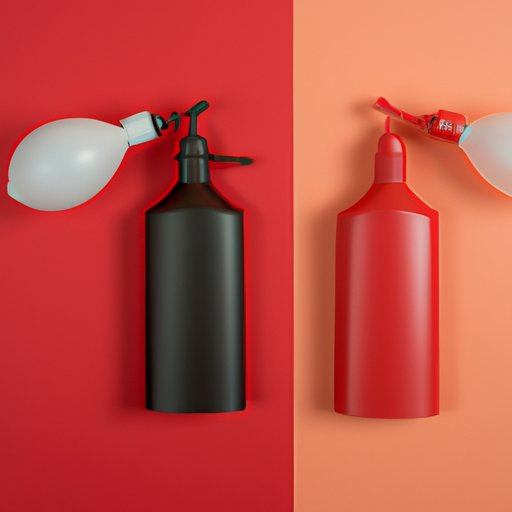
I. Introduction
Tanning has been a popular practice for many years, dating back to ancient times. People enjoy having a sun-kissed glow for various reasons, from increased confidence to improved mood. However, with the known dangers of sun exposure, it’s important to learn how to get a tan safely and responsibly. This guide will provide you with essential information on how to achieve a beautiful, natural-looking tan without compromising your health.
II. The Benefits of Tanning
There are several benefits to having a tan, including:
Increased Vitamin D: Sun exposure is the best-known natural source of vitamin D which is essential for bone health.
Improved mood: Exposure to sunlight has been shown to release endorphins in the body, also known as ‘feel-good’ hormones.
Attractiveness: There is a general cultural belief that people with a tan look more attractive and healthy.
III. Tips for Safe Tanning
It’s essential to prioritize safety when tanning. The sun emits harmful UV radiation, which can lead to skin damage and, in severe cases, skin cancer. Here are some tips to keep in mind when tanning:
Use sun protection: Always use sunscreen with a minimum of SPF 30 and apply it generously at least 20 minutes before exposure to the sun. Don’t forget to reapply every two hours and after swimming or sweating excessively.
Avoid excessive tanning: It’s important to recognize when you’ve had enough sun exposure, as prolonged exposure can lead to skin damage and sunburn. It’s recommended to limit sun exposure to around 15 minutes per day to avoid skin damage.
Protect vulnerable areas: When tanning outside, don’t forget to protect sensitive areas, such as your face and lips, by wearing a hat and using lip balm with SPF protection.
Be aware of the risk: Overexposure to the sun can lead to skin damage, resulting in aging, wrinkles, and potentially skin cancer. Skin cancer is the most common form of cancer in the United States, so it’s essential to take precautions and limit sun exposure whenever possible.
IV. Natural Ways to Get a Tan
Some natural ways to get a tan include:
Outdoor activities: Engaging in outdoor activities like swimming, hiking, and running can promote tanning. Just make sure to use sun protection and limit exposure to the sun.
Sunbathing: When sunbathing, it’s best to do so in the early morning or late afternoon when the sun is not as strong as it is during midday. Start with 10-15 minutes at a time and gradually increase the amount of time you spend in the sun each day.
Optimal tanning conditions: It’s best to tan on a sunny day, as cloud cover can reduce UV radiation by up to 90 percent. Try to find a spot that’s as free from shade as possible and use a sun lounger or a beach towel to maximize your exposure to the sun.
V. Tanning Products
There are several different types of tanning products on the market that can help achieve a natural-looking glow without sun exposure. Some common types of tanning products include:
Self-tanning sprays: Self-tanning sprays are a great way to achieve a quick and easy tan. They work by temporarily staining the top layer of your skin, fading over time. Be sure to apply it evenly and exfoliate beforehand for best results.
Tanning lotions: Tanning lotions contain active ingredients that help you achieve a sun-kissed glow while providing moisturizing benefits to the skin.
Tanning oils: Tanning oils help enhance the tanning process and can be used in conjunction with other tanning products or on their own. It’s essential to use a product with an appropriate SPF factor in conjunction with tanning oils.
When using tanning products, it’s important to read the instructions carefully and follow them closely to achieve the best results.
VI. Indoor Tanning
Indoor tanning exposes the skin to artificial UV radiation, which can be dangerous if not done correctly. Overexposure to UV radiation can lead to skin damage and contribute to skin cancer. Some indoor tanning options include:
Tanning beds: Tanning beds are common in salons but are a known risk factor for skin cancer. The World Health Organization classifies UV rays emitted by tanning beds as Group 1 carcinogens alongside plutonium and tobacco smoking.
Spray tans: Spray tans are a popular alternative to UV radiation tanning. They involve the application of a spray tan solution to the skin by a machine or a professional.
Tanning pills: Tanning pills are controversial, with serious potential side effects. They work by increasing the production of melanin, but the pills are unregulated and can be ineffective or have negative health impacts.
VII. Maintenance of a Tan
Once you achieve your desired tan, it’s essential to take steps to maintain it. Here are some tips to keep in mind:
Hydrate your skin: Moisturizing is essential to keeping your skin hydrated and healthy-looking. Opt for a moisturizer that’s oil-free and contains antioxidants to lock in your tan for longer.
Exfoliate cautiously: Exfoliating can help remove dead skin cells and make your tan look more even. However, it’s essential to do so in moderation and avoid exfoliating too often as it can remove your tan faster.
Avoid chlorine exposure: Chlorine can quickly strip your skin of its natural oils, resulting in fading of your tan.
VIII. Conclusion
Getting a tan can be a fun and confidence-boosting experience, but it’s essential to prioritize your health and safety. By following the tips outlined in this guide, you can achieve a natural-looking tan safely and responsible.





